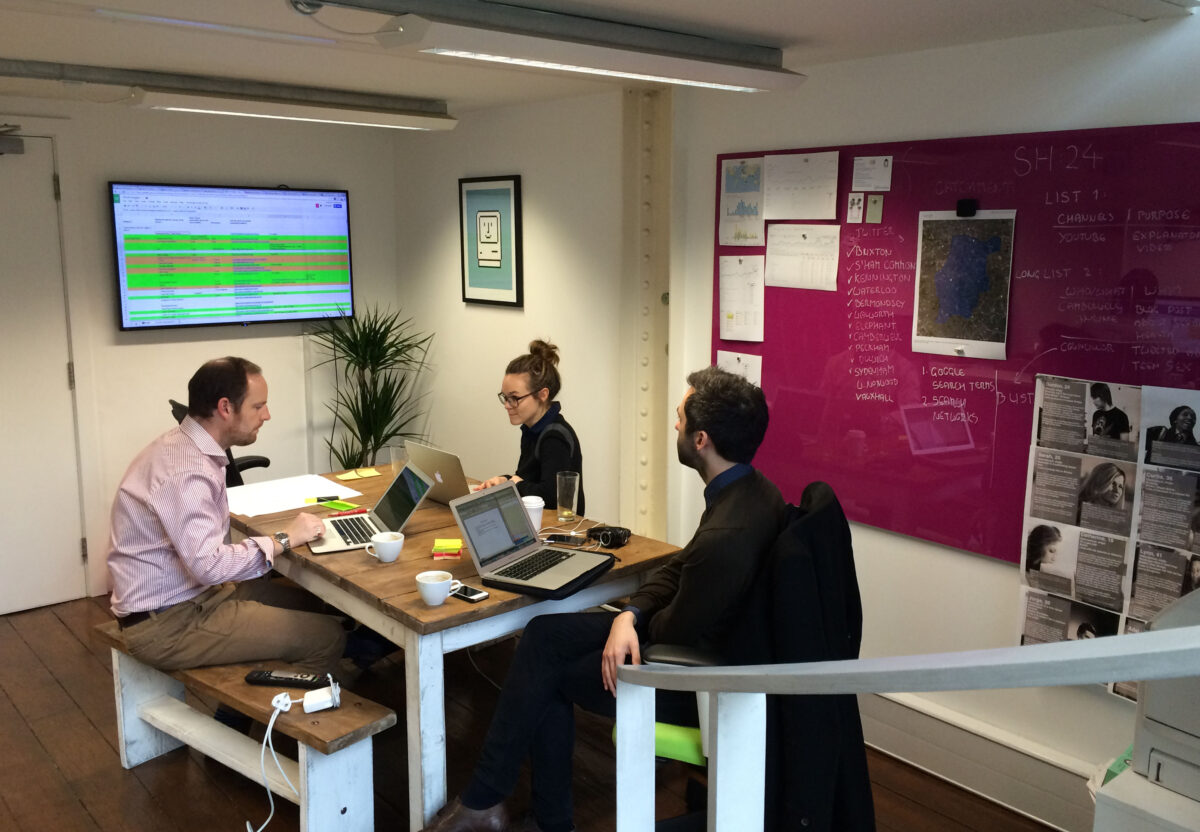I’ve been musing recently on an interesting quandary: why aren’t advocates of public participation and engagement more successful in engaging the policymakers who design consultations?

Why is it that we continue to live in a world of PDF consultation documents, when so much research and – let’s be honest about this, government money – has been spent on toolkits, reports, frameworks and models?
It’s not for want of published material or wise men and women working in the field. There’s Involve, of course which publishes tons of useful stuff, including People and Participation sponsored by the excellent but little-known Democratic Engagement Branch of the Ministry of Justice. And there are plenty of specialist consultants around to help too.
Is it that the techniques don’t work? Is it that there’s too much out there to digest? Is it that policymakers are idle or blinkered? Is it that politics or the media get in the way of open public dialogue? Is it about budget, or timescales, or vested interests, or a consultancy conspiracy… or what?
Let’s take a made-up example: Sanjay.
Sanjay is a middle-ranking official in a central government department. He’s working on a new piece of policy which affects everyone in the UK, proposes some controversial options and is also quite technical – there are econometric models of market impact, a stakeholder list of 300 organisations and a complex history stretching back decades. Sanjay’s boss is friendly but overwhelmed with other policy projects, and Sanjay has only a couple of people supporting him in his team on this policy, one of whom is quite new. The Minister – recently arrived following a reshuffle – is keen to see action on the policy – under pressure from the Opposition – and is pushing Sanjay to prepare a Green Paper in the next six weeks with a view to bringing forward legislation in the next parliamentary session.
Sanjay’s heard of citizens juries, but isn’t sure what they do. He’s an economist by training, and is confident that one of the proposed options is going to be most effective – happily, two of the key stakeholder bodies seem to agree, based on a recent meeting. Since it’s quite a specialist area, it’s hard to see what perspectives a lay person could usefully contribute. So while there’s a duty to consult, the team are really hoping for a tick in the box.
When Sanjay meets the consultation co-ordinator in his Department to talk about the options, they agree to recommend to the Minister that the document be put as a PDF on the Department’s website, and a letter be sent to the stakeholder list inviting them to respond. The Minister will do a photocall at a local community centre to promote the launch.
87 responses are received, and there are two short articles in a broadsheet supplement. Under six hundred people are touched by the consultation, though Sanjay and the Minister feel they’ve done a good job, and both are subsequently promoted.
What are we doing, in our different roles, to help people like Sanjay make better policy through public dialogue and involvement?
Image credit: massdistraction


Comments
Your scenario is spot on.
The crux of the issue for me is: in a big government department, how do you *find* Sanjay, within that 6 week window, before it’s too late to do anything at all? How do you even know he’s doing this work?
Which suggests the answer lies in:
– making user-friendly tools and guidance readily available and easy for Sanjay to find
– brainwashing (or preferably, as I have said elswehere, mandating) the consultation co-ordinator to think conversations first, publications later
– culture change, so that Sanjay’s peers, and the minister, stop thinking 87 responses is good enough
I’m less sure we can make a dent on the socio-political pressure on timetables.
[…] “…why aren’t advocates of public participation and engagement more successful in engaging the…“ […]
I wonder if it’s people you need – what if every major policy team in Whitehall had an embedded engagement specialist, helping them to identify needs and opportunities and connecting the right officials to the right tools and communities? Even identifying the unknown unknowns, such as the fact that 87 responses isn’t good.
It’s unfashionable to suggest government headcounts should be made bigger, but I think is the kind of case where superficially cheaper toolkits, conferences, courses or external agencies just won’t deliver the kind of support to Sanjay that would genuinely make a difference.
I like the question. For me, I think you’re getting closest with this one:
‘Is it that politics or the media get in the way of open public dialogue?’
But it’s the style of administration more than politics, I suggest. Bureaucracies (especially when based in a large centrifugal city from which it’s hard to make meaningful explorations) have all sorts of mechanisms to protect their own culture.* That culture is cautious towards innovation because outcomes can’t accurately be predicted; and suspicious of change when it is offered at a profound level, because of the ramifying effects. Hierarchical bureaucracy is highly self-protective, and a bit unsuited to the network society or an age of participative governance. But it will be the last struture to go, I guess.
*Those who can, do. Those who cannot, invent procedures. And those who can’t even invent procedures, end up in human resources.
Surely what needs to change over time is the culture and context. The minister needs to learn that action does not mean a green paper in six weeks. Perhaps we get too quickly to the “new policy is needed” stage. And jump too quickly to the assumption that coming up with the right policy change will make everything fine. So we need to focus more (and have more conversation) on what ministers/depts are trying to achieve. Then we need to have more open input on how you might get there (with more space for ideas that are not just about government actions). And finally we need to recognise that it takes time and conversation to get people truly on board and to get implementation right. As Charlie Leadbeater would say, we have had too much doing for and to – we need now to develop approaches that involve doing with.
Interesting thoughts – thanks
@Kevin: I see some truth in the bureaucracy argument, but I wonder if this isn’t an opportunity in itself. Could participation be made part of the process, in the same way that consultation is? So rather than a weighty document and 12 weeks to discuss it, an official consultation of type X needs to incorporate public participation methods from list Y?
@Paul: Absolutely, and frankly I’m coming to this view more and more strongly. Of course Government has a role, but the default is generally still to presume government action and consult on the form it should take. But what does it mean for individuals like Sanjay and the Minister, who get judged on their actions rather than wider outcomes? Should we give up on the idea of winning over every Sanjay in every department to think creatively about the techniques available?